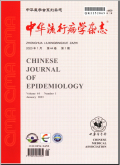摘要目的:比较常见时间序列模型应用于新型冠状病毒肺炎(COVID-19)疫情预测的效果。方法:收集2020年4月1日至9月30日美国、印度和巴西3个国家COVID-19每日确诊病例数,分别建立差分自回归移动平均(ARIMA)模型和循环神经网络(RNN)模型,使用平均绝对百分比误差(MAPE)和均方根误差(RMSE)等指标,比较不同模型预测9月21-30日确诊病例的表现。结果:应用ARIMA模型预测美国、印度和巴西疫情的MAPE分别为13.18%、9.18%和17.30%,RMSE分别为6 542.32、8 069.50和3 954.59;应用RNN模型预测美国、印度和巴西疫情的MAPE分别为15.27%、7.23%和26.02%,RMSE分别为6 877.71、6 457.07和5 950.88。结论:ARIMA和 RNN模型的COVID-19预测效果存在地区差异,ARIMA模型的预测效果在美国和巴西较优,而RNN模型的预测效果在印度较优。
更多相关知识
abstractsObjective:To compare the performances of different time series models in predicting COVID-19 in different countries.Methods:We collected the daily confirmed case numbers of COVID-19 in the USA, India, and Brazil from April 1 to September 30, 2020, and then constructed an autoregressive integrated moving average (ARIMA) model and a recurrent neural network (RNN) model, respectively. We applied the mean absolute percentage error (MAPE) and root mean square error (RMSE) to compare the performances of the two models in predicting the case numbers from September 21 to September 30, 2020.Results:For the ARIMA models applied in the USA, India, and Brazil, the MAPEs were 13.18%, 9.18%, and 17.30%, respectively, and the RMSEs were 6 542.32, 8 069.50, and 3 954.59, respectively. For the RNN models applied in the USA, India, and Brazil, the MAPEs were 15.27%, 7.23% and 26.02%, respectively, and the RMSEs were 6 877.71, 6 457.07, and 5 950.88, respectively.Conclusions:The performance of the prediction models varied with country. The ARIMA model had a better prediction performance for COVID-19 in the USA and Brazil, while the RNN model was more suitable in India.
More相关知识
- 浏览0
- 被引1
- 下载0


相似文献
- 中文期刊
- 外文期刊
- 学位论文
- 会议论文



 换一批
换一批 换一批
换一批



